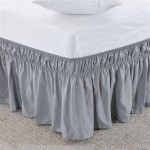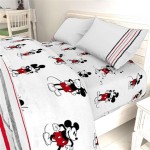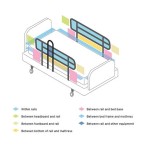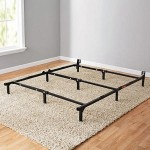How Long Can Bed Bugs Live In Encasements?
Bed bugs are notoriously resilient pests that can survive in a variety of environments, including encasements. These protective covers are designed to trap bed bugs and prevent them from spreading to other areas, but how long can bed bugs actually live inside an encasement? Here's a comprehensive guide to understanding the lifespan of bed bugs in encasements:
Factors Affecting Bed Bug Lifespan in Encasements
The lifespan of bed bugs in encasements can vary depending on several factors, including:
- Temperature: Bed bugs are cold-blooded insects, and their metabolic rate and activity levels are affected by temperature. In cooler temperatures, bed bugs enter a state of dormancy and can survive longer in encasements.
- Humidity: Bed bugs require a certain level of humidity to survive. In dry environments, they may dehydrate and die more quickly.
- Food availability: Bed bugs need to feed regularly on blood to survive. If they do not have access to a blood source, they will eventually starve.
- Encasement type: The type of encasement used can also impact bed bug lifespan. Encasements made of thick, breathable materials, such as zippered mattress covers and box spring encasements, provide a barrier that bed bugs cannot penetrate. However, thinner or less durable encasements may allow bed bugs to escape or access food sources.
Average Lifespan of Bed Bugs in Encasements
Under ideal conditions, bed bugs can live for several months inside an encasement. In cooler temperatures and with limited access to food, bed bugs can survive for up to a year or more. However, in warmer temperatures and with a regular blood source, bed bugs may only live for a few weeks or months.
How to Prevent Bed Bug Survival in Encasements
To prevent bed bugs from surviving in encasements, it is important to:
- Inspect encasements regularly: Check for any tears or damage that could allow bed bugs to escape.
- Vacuum encasements frequently: Use a powerful vacuum cleaner to remove any bed bugs or eggs that may be present.
- Wash encasements in hot water: Wash encasements in hot water (113°F or higher) to kill bed bugs and their eggs.
- Use a bed bug treatment: If bed bugs are present in your home, consult with a professional pest control specialist to determine the best treatment options.
Conclusion
Bed bugs can live for several months or even a year inside encasements under ideal conditions. However, by following the tips outlined above, you can effectively prevent bed bugs from surviving in encasements and protect your home from these resilient pests.

Bed Bugs Do Mattress Encasements Help Pest Management Professional

Can You Still Get Bed Bugs With A Mattress Cover

Do Bed Bug Covers Work Integrity Solutions

7 Stages Of The Bed Bug Life Cycle You Need To Know

Mattress Encasements For Bed Bugs

Can You Still Get Bed Bugs With A Mattress Cover

How Long Can Bed Bugs Live Without Food Pestseek

The Ultimate Guide To Bed Bugs Prevention In Singapore

All You Need To Know About Bed Bugs And Mattress Encasements Bargoose Home Textiles Inc

Can You Still Get Bed Bugs With A Mattress Cover







